11 Strategies for Truck Drivers To Start Following A Healthy Lifestyle
11 Strategies for Truck Drivers To Start Following A Healthy Lifestyle
1.Identify unhealthy habits.
The first step towards living a healthier, happier life is acknowledging areas where you might have a problem. After all, you may have picked up on unhealthy habits without really realizing it. For example, going to bed late every night can affect your sleep schedule, meaning that you are never as rested as you need to be. Alternatively, you could rely on processed foods as they are often quicker and easier to prepare than fresh meals. Identifying these issues means that you know exactly what changes need to be made.2.Cook Yourself.
Healthy eating does not mean that you have to eat salad after salad; in fact, you can enjoy thousands of delicious recipes when focusing on healthy living. Therefore, one way to focus on transitioning into a healthy lifestyle is by spending more time in the kitchen, experimenting with new foods and ingredients instead of reaching for the takeout menu or a microwave meal. This is also a great way to develop new skills. And since cooking on the road can be challenging for some, make sure you check out Road Pro’s cookware helping you make eating healthy a little bit easier. Our two favorites are Road Pro Portable Stove (AKA Lunchbox) and the 12 volt Saucepan.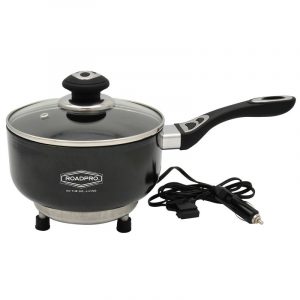

4.3.3 3.Practice Preventative Health.
The majority of us have all grown up with the mentality of “sick care,” meaning don’t do anything about your health until you are sick. I’m telling you that mentality is wrong. Don’t wait for your body to show signs of sickness or stress before deciding to do something about your health as a truck driver. Being aware of any health issues you could face, especially as a truck driver, can equip you to find ways to prevent them or minimize their impact. Truck driver health issues like heart disease, sleep apnea, dehydration, diabetes, fatigue, and obesity can all become a concern for a truck driver’s health. We want you to know there are things you can do to help reduce the chances of impacting your health.4. Keep on walking.
There are many benefits associated with walking more often; it can improve your cardiovascular fitness, balance, dexterity, and endurance. Furthermore, walking also encourages you to spend more time outdoors, which is excellent for your health and happiness. As a general rule, you should try to take around 10,000 steps a day. And as a truck driver, that can be tricky sometimes. Consider laps around your truck, using your truck step as a mini stair stepper to start. If this is not possible for you, don’t worry – give yourself a smaller, more manageable target and work on increasing it over time.5.Discover what trucker fitness exercises work for you.
Incorporating exercise into your routine is a great way to transition into a healthier lifestyle, but you must focus on activities that work for you and your needs. Finding a workout routine that works for you protects you from overexertion or injury and helps you see positive results sooner rather than later. It also makes it easier to put together a killer fitness regime.
6.Add to your exercise routine over time.
When you haven’t participated in any exercise for a little while, reintroducing it to your routine could seem incredibly daunting, especially if you feel your fitness and endurance levels are not up to scratch. Therefore, you must start small – focusing on small bursts of exercise instead of throwing yourself straight into a complex and lengthy routine. As your fitness levels increase, you can always build up the intensity of your workout to match.7.Reduce daily stress.
While stress can be unavoidable, you mustn’t put yourself under stress unnecessarily, as this can have an incredibly negative effect on your overall health and happiness. For example, prolonged stress can lead to a lack of sleep and poor motivation. Therefore, one way you can begin to live a healthier lifestyle is by being honest about what stresses you and then noticing the conversation and action steps you take after you become aware. Much just default to complaining and actually attach to the stress as an identity. Ask yourself, what can I do that I enjoy? What makes me happy? What helps me reduce stress? This could include asking for additional support at work or letting go of friends who drag you down instead of lifting you.Life Is About Choices
The great American philosopher, Ralph Waldo Emerson, wrote a letter to his daughter, who was worried over a mistake she’d made. This is what it said:“Finish each day and be done with it. You have done what you could. Some blunders, losses, and absurdities no doubt crept in; forget them as soon as you can.
8.Schedule in some self-care.
While it may not essentially seem that way, self-care should be considered an essential part of your routine and help you live a healthier, happier life. Therefore, you must add self-care to your schedule in as many different forms as possible. Remember, self-care could include curating a skincare routine or something simpler like giving yourself a break when you need one.9.Put together a sleep schedule.
Your sleep affects your health in more ways than you may initially realize, meaning that it’s vital you work on improving your sleep schedule. Thankfully, there are various steps you can take to achieve this goal. For example, you can avoid using your phone or staring at a screen before bed, which often makes it harder for your brain to shut off. Furthermore, you could start to go to bed at the same time each evening, as a routine can help you drift off to sleep much easier as your brain and body will begin to feel tired around this time. And when you can’t fall asleep because your back or hips hurt, it might be time for a quick stretch or a readjustment of how you sleep.10.Set yourself manageable goals.
Setting yourself new goals is an important part of following a healthy routine, whether they pertain to healthy weight loss or increased ability to do specific tasks. However, the goals you set for yourself must be realistic and attainable – as this is the easiest way to remain on track and avoid feeling disheartened. For example, instead of setting yourself to lose X amount of weight or fat, focus on the health benefits you can aspire towards instead. This could include goals such as feeling more energized, sleeping better, or increasing the amount of distance you can walk/run. (Check out Mother Trucker Yoga’s blog on how to set GOALS)11.Remain positive.
This is perhaps the most important step on the list, as to revamp your lifestyle, you need to be able to maintain a positive outlook. While your friends and family will likely support your journey, you also have to provide yourself with the motivation needed to make fundamental changes. Otherwise, you may find that you give up at the smallest of hurdles. It’s important to remember that healthy living is a change of lifestyle, not something you do for a few weeks and then abandon. However, this shift will not feel as dramatic or hard to conquer by incorporating change gradually over time. Therefore, it’s equally important that you do not rush the process and try to change everything about your habits and lifestyle overnight. Instead, try to introduce a few minor changes a month – knowing that big results will follow. You’ve got this!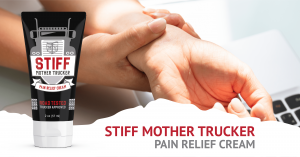
ou May Also Like
Why Stretch Breaks Make Truckers Safer (and 5 You Can Do Anywhere) Take regular truck driver stretch breaks to stay alert, improve circulation, and reduce fatigue while driving. 👉 Read it here 🔗 FMCSA on driver fatigue and safetyHow Posture Affects Driving Safety (and How to Fix It on the Road) Learn how improving your posture for driving safety reduces back pain and helps you stay focused behind the wheel. 👉 Read it here 🔗 Mayo Clinic on office ergonomics and posture
Aching After a Long Haul? Try These Yoga Moves for On-the-Road Pain Relief Relieve stiffness and pain with simple yoga for trucker pain relief exercises designed for life on the road. 👉 Read it here 🔗 NIH on yoga for pain management
Stressed Out on the Road? Here’s How Yoga Helps Truck Drivers Stay Calm Discover how stress relief for truck drivers through yoga techniques can keep your mind and body balanced. 👉 Read it here 🔗 American Psychological Association on stress management


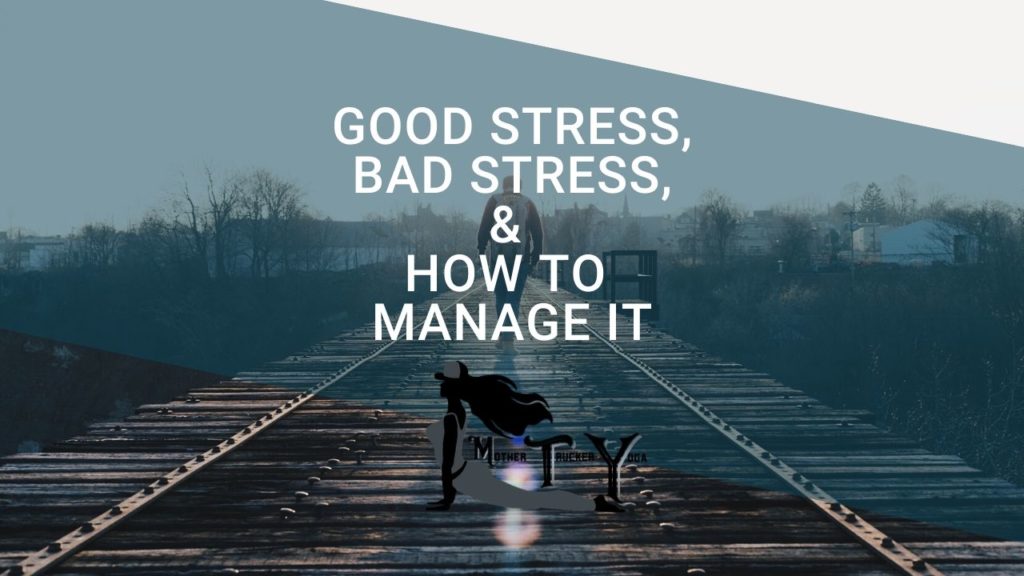





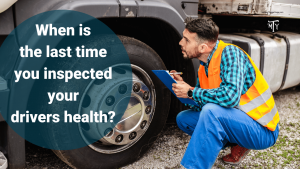
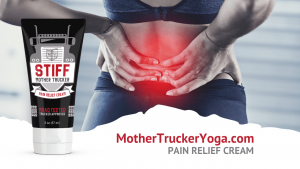

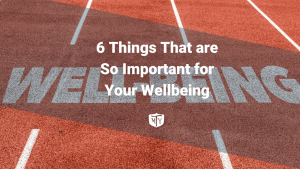

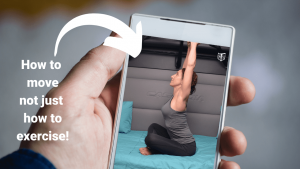

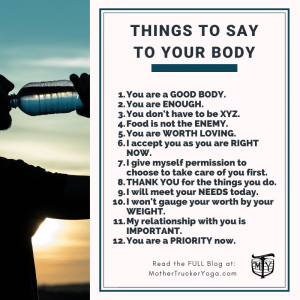 If you think this is too simple. You are right. It is, and that is why most think it’s not worth it. But the truth is. What you say to yourself is worth focusing on. If your kids listen to everything you say, is your brain not listening to everything you say too?
If you want to learn why Mother Trucker Yoga and how we are different than the rest.
If you think this is too simple. You are right. It is, and that is why most think it’s not worth it. But the truth is. What you say to yourself is worth focusing on. If your kids listen to everything you say, is your brain not listening to everything you say too?
If you want to learn why Mother Trucker Yoga and how we are different than the rest. 